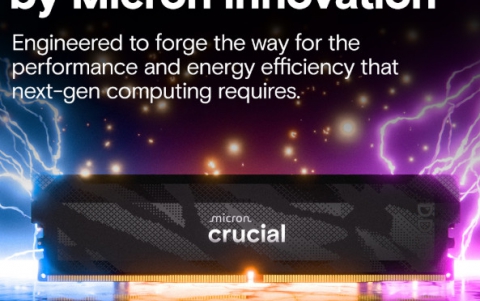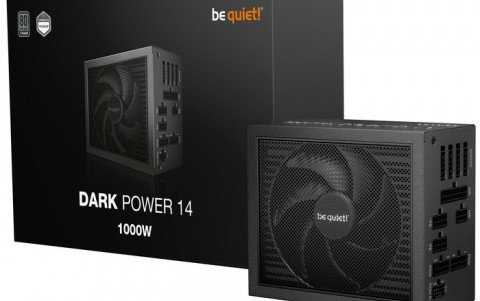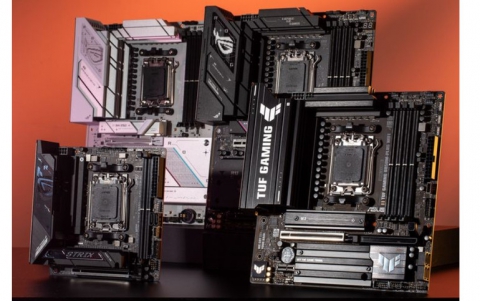Sanyo CRD-BP2 CD-RW
1. The buffer underrun eliminator!
Review Pages
2. Installation
3. Data Tests
4. DAE Tests
5. CDR Tests
6. Conclusion
7. Mini-FAQ
8. ADDENDUM
The buffer underrun eliminator!
 Most
users are aware of the Sanyo name as a prominent consumer appliances, electronics,
and home entertainment device manufacturer. Few, if any, know as well that Sanyo
is among the biggest CDR pick-up (and supporting chipset) makers. In particular,
many current 8- and higher-speed CD recorder drives are based on laser diodes
produced by Sanyo.
Most
users are aware of the Sanyo name as a prominent consumer appliances, electronics,
and home entertainment device manufacturer. Few, if any, know as well that Sanyo
is among the biggest CDR pick-up (and supporting chipset) makers. In particular,
many current 8- and higher-speed CD recorder drives are based on laser diodes
produced by Sanyo.
It is the laser diode that determines to a large extend the maximum recording and re-writing speed of a particular drive and its reliability, roughly measured as the average hours of CD recording until the diode failures. Much to their users' dissatisfaction, most first and second generation drives suffered from early diodes malfunctions and eventually disintegration. The latest supporting components offered by Sanyo to various CD recorder makers have well established it as a reliable and credible manufacturer.
One of the major shortcomings of current CD recorder technology, the one that particularly has prevented most average users from enjoying the use of a CD recorder drive into their home PCs, is the frequent destruction of their media during recording. This is mainly due to the inadequacy of the PC to keep-up with the bus data demand during recording and is usually termed buffer underrun.
 Being the first CDR maker to offer 12x recording speeds on its drives, Sanyo
this time innovated once more and moved CD recording technology one step further
into the future. It recently developed and introduced a new revolutionary achievement
that eliminates buffer underruns, equipping its latest pick-up offering with
the so-called "BURN-Proof" feature. Does this new technology work
as well as the Sanyo specifications claim? What does it offer to all of us?
Being the first CDR maker to offer 12x recording speeds on its drives, Sanyo
this time innovated once more and moved CD recording technology one step further
into the future. It recently developed and introduced a new revolutionary achievement
that eliminates buffer underruns, equipping its latest pick-up offering with
the so-called "BURN-Proof" feature. Does this new technology work
as well as the Sanyo specifications claim? What does it offer to all of us?
Introduction :
As it might be known, Sanyo is the company behind many current 8x CDR-W
drives. It debuted with an 8x writer (the 8/20 model), after which a series
of high speed writers followed: a 8x writer with re-write capability (8/2/20),
a 8x writer with a 4x re-write speed and finally its worldwide first, the first
12x writer which was also a 4x re-writer. Its very latest recorder also includes
the so-called BURN-Proof feature, which eliminates the main cause that leads
to badly burned disks (also known as coasters).
The achievement of 12x recording speed is by no means trivial. As the times of following table show, it transforms a CD recorder to a giant floppy disk drive with the performance of almost a hard disk!
|
Recording Speeds and Times |
||
|
74 mins / 650 mb |
1x |
74 mins |
|
74 mins / 650 mb |
2x |
37 mins |
|
74 mins / 650 mb |
4x |
18.5 mins |
|
74 mins / 650 mb |
6x |
12.34 mins |
|
74 mins / 650 mb |
8x |
9.25 mins |
|
74 mins / 650 mb |
12x |
6.17 mins |
History
Buffer underrun errors have been proven to be the largest annoyance for the users of CD-R/RW drives since the very beginning of CD recording history. For the time being, BURN-Proof seems to be the only available technology, which seems to protect recording media from this type of errors.
A CD-R/RW drive records data on a disc at a Constant Linear Velocity (CLV). Once the drive starts to record, the host computer has to send data to the drive at a rate at least equal to the speed of writing. For example, in the case of a 12x speed recording, the expected data rate is 2352x75x12 bytes per second, or approximately 2Mbytes/sec. This is because 1 block is 2352bytes, 1 second is 75 blocks and the recording occurs at 12x speed, and this indeed imposes a heavy tax on system resources during burning. As most operating systems in wide use today are not specifically designed for streaming high volume data in real time, the data transfer rate of a PC over the peripheral bus is not stable.
This is due to variations of a PC's job-load, the occasional misbehavior of working applications and (some times) due to the idiosyncrasies (and/or inadequacies) of the underlying operating system (in our case any Windows flavour). Therefore, the CD-R/RW drive has to store at first a certain amount of data derived from the PC into a dedicated memory, called a buffer. This buffer is used for taking care off even the slightest differences between the CLV drive recording speed and the unstable data flow from the PC. For reasons of space, in the following we interchangeable use the term "data" both for recording regular data as well as audio files.
Why the BufferUnderRun occurs?
Under any normal situation the drive buffer should always be able to maintain
enough data needed for recording onto the inserted media at a pre-specified
speed. In an ideal case, the drive itself should have a 650MB capacity buffer,
which is obviously unrealistic. In practice, the buffer memory of most current
recorder drives is usually 2-4Mbytes. Of course, a buffer underrun error can
never occur when the drive records data of a total capacity less than or equal
to the buffer size. (For example, this happens when performing "packet"
recording, i.e., when the data is written in small "chunks").
In all other cases there is a constant need in part of the drive for receiving enough data from the host PC throughout the whole recording process. Consequently, when the streaming data is delayed beyond a certain point, the drive cannot continue the recording procedure due to the exhaustion of the buffer in data. This type of recording error is usually termed as a "Buffer Under Run Error".
How it is implement in CDR-W drive?
For a CDR-W drive to support the BURN-Proof feature it must make use of
a special LSI (Large Scale Integration) chipset. In the case of the CRD-BP2
reviewed here, the supporting chips are the SANYO LC898023K and LC898093K. Although
CDR is a digital technology, as in almost all cases where mass storage media
are concerned, the actual signals are recorded on a disk as analogue.
The above mentioned LSI chips have the capability of controlling these analogue signals to suspend and restart recording. Both chips contain proprietary "microcode" developed by SANYO. In order for the BURN-Proof technology to work the respective CDR Software used for recording must also be BURN-Proof compatible. For now, only Nero Burning Rom, NTI CD-Maker pro and Bs Recorder Gold (in Japanese) are supported. Recently, DiscJuggler introduced a BURN-Proof enabled version, but it still suffers from beta-software problems (doens't work at all..)
Where does BURN-Proof name come from?
From Buffer Under RuN-Proof.
How Burn Proof Drives avoids Buffer Under Run Error?
Immediately
|
|
|
BufferUnderRun |
|
|
|
Get NewData ReTrace
Synchronize
Detect RecEnd
Restart
Recording
|
after the recording starts, the micro-controller inside the CD-R/RW drive always monitors the status of the buffer. When the drive judges that a Buffer Underrun Error is about to happen, it suspends recording at the appropriate location of the EFM (Eight-to-Fourteen Modulation) pattern.
While the drive stays in suspend mode, it continues trying to receive data from the host PC to fill-up its data buffer and subsequently prepares itself to restart recording by accessing the end of the previously recorded area (EFM pattern). To continue recording at the appropriate place, the drive compares the recorded data with the data in buffer for synchronizing adjacent frames. Afterwards, it restarts recording as soon as it exactly locates the last recorded point. Because the micro-controller in the drive stores the suspended recording address, it controls the status of both the buffer and the servo-mechanism so that the drive restarts recording at exactly the previously suspended recording point.
What I will gain from using BURN-Proof feature ?
Normally, users of BURN-Proof enabled drives should be less worried in the
future about coaster discs made due to Buffer Under Run Errors. They can safely
do other jobs while recording and be sure that their recorder drive and
the accompanied recording application will seamlessly handle all Buffer Under
Run Errors.
As an example, one can decode MP3 music, encode MP3 tracks, defragment hard disks and simultaneously record data or audio. All at the same time. Up to now, you can not do any other serious work on a PC while recording. Certainly, not much when recording at 12x! Even low performance, aging PC's will be able to handle the "huge", according to their capabilities, amounts of streaming traffic necessary for recording at top 12x speed.
We should note, however, that BURN-Proof technology is not able to eliminate all kinds of errors. Several other types of recording errors may occur. Those depending on CD-R media quality can not be handled by BURN-Proof technology. Nor are those due to host PC application or operating system crashes, recording application instabilities or bugs, device driver misconfigurations and so on.
What is the quality of the recorded disc by BURN-Proof ?
When the laser turns off due to a buffer underrun error, a small gap will
appear on a disk where no data will be recorded. When subsequently recording
resumes, there will be a small area where data from 2 adjacent sectors will
be overlapped. BURN-Proof technology handles these overlapped data areas at
the data-gaps by suspending and restarting the recording under the control of
the Auto Power Control Function of the laser.
For example: the length of data-gap (unrecorded area) on the disc will be approximately 45um at 12x speed. The data-gap of around 45 um will be completely corrected by the LSI error correction function. Therefore, the disk created by a BURN-Proof recorder can be handled as a plain recorded disc where laser was never turned off.
Review Pages
2. Installation
3. Data Tests
4. DAE Tests
5. CDR Tests
6. Conclusion
7. Mini-FAQ
8. ADDENDUM














